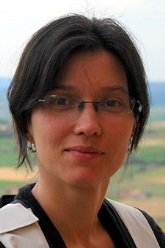【8.15】Academic Lecture: Direct detection of dark matter particles
Title: Direct detection of dark matter particles
 |
Speaker: Dr. Emilija Pantic, University of California, Los Angeles
Host: Prof. Zhang Xinmin
Time: 10:30 AM, August 15, 2012
Place: Room C305, IHEP Main Building
Abstract:
The nature of dark matter still remains unknown and is being recognized as one of the great puzzles in science today. The most attractive candidates for dark matter are Weakly Interacting Massive Particles (WIMPs) that arise naturally in several models of physics beyond the Standard Model, such as Supersymmetry. Despite some experiments reported "hints" for dark matter interaction, no definitive signal has yet been discovered. The field of direct dark matter searches has seen important contributions in recent years from experiments involving cryogenic and liquid noble detectors. Among latter ones, XENON100 experiment, using 62kg dual phase liquid xenon (LXe) time projection chamber (TPC), is leading the field with the most sensitive limits on dark matter detection to date. After a short introduction to dark matter and direct detection techniques, I will describe the dual phase noble liquid TPC concept, focusing on XENON100 experiment. The most recent result from XENON100 collaboration will be presented. Finally I will introduce the planned next generation XENON detector: XENON1T. The detector, using the same technique and a target mass of about 1 tonne of LXe, aims to achieve two order of magnitude increase in sensitivity beyond current state-of-art on a rather fast timescale.
About the Speaker:
Emilija Pantic received her PhD in Physics in 2008 at the Technical University in Munich, Germany. As an undergrad and during the PhD she worked on the CRESST cryogenic dark matter search, focusing on the development of ultra sensitive TES light detectors. At the end of 2008, she joined XENON dark matter search program, utilizing dual phase liquid xenon time projection chamber (TPC) technique. After a year and half of work at the experimental cite in Gran Sasso, Italy, she moved to UCLA in Los Angeles (USA) to work in R&D for liquid noble detectors works. In 2011 she also joined DarkSide dark matter search program which utilizes dual phase liquid argon TPC technique. She is involved both in the analysis of current data and R&D related to future XENON and DarkSide detectors. She plans to pursue her career in physics research with research interests being particle astrophysics, in particular dark matter searches and related detector development.